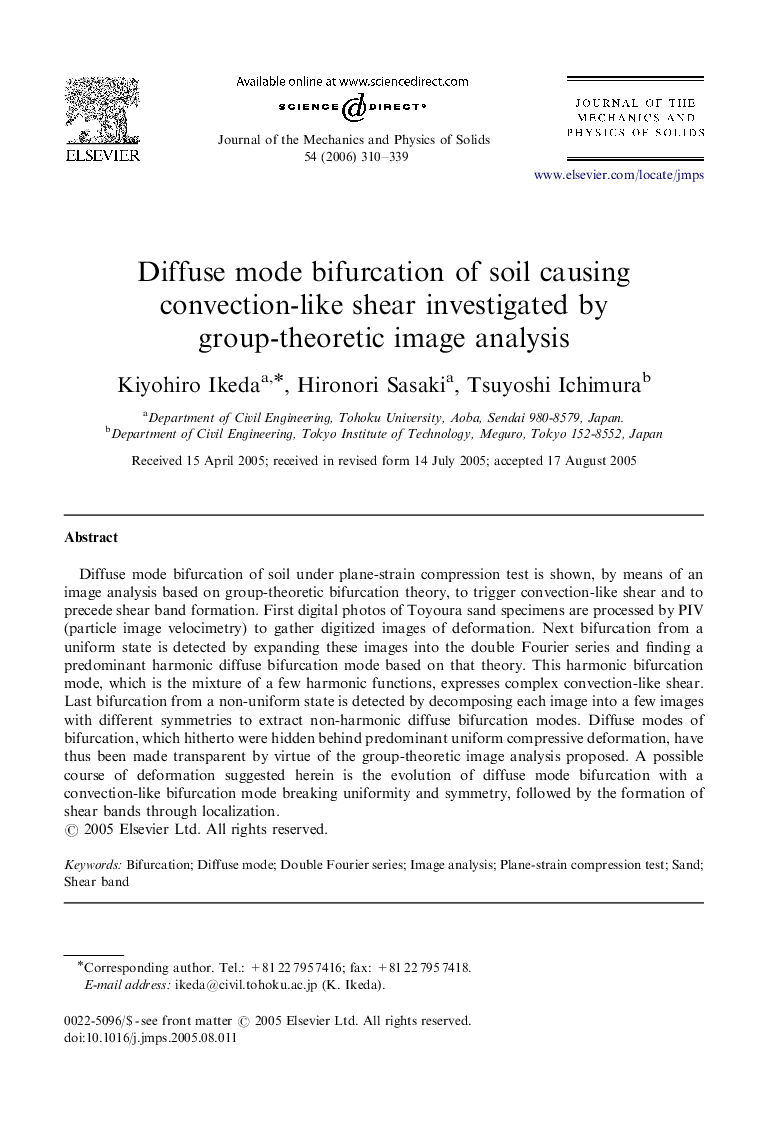| Article ID | Journal | Published Year | Pages | File Type |
|---|---|---|---|---|
| 798515 | Journal of the Mechanics and Physics of Solids | 2006 | 30 Pages |
Abstract
Diffuse mode bifurcation of soil under plane-strain compression test is shown, by means of an image analysis based on group-theoretic bifurcation theory, to trigger convection-like shear and to precede shear band formation. First digital photos of Toyoura sand specimens are processed by PIV (particle image velocimetry) to gather digitized images of deformation. Next bifurcation from a uniform state is detected by expanding these images into the double Fourier series and finding a predominant harmonic diffuse bifurcation mode based on that theory. This harmonic bifurcation mode, which is the mixture of a few harmonic functions, expresses complex convection-like shear. Last bifurcation from a non-uniform state is detected by decomposing each image into a few images with different symmetries to extract non-harmonic diffuse bifurcation modes. Diffuse modes of bifurcation, which hitherto were hidden behind predominant uniform compressive deformation, have thus been made transparent by virtue of the group-theoretic image analysis proposed. A possible course of deformation suggested herein is the evolution of diffuse mode bifurcation with a convection-like bifurcation mode breaking uniformity and symmetry, followed by the formation of shear bands through localization.
Related Topics
Physical Sciences and Engineering
Engineering
Mechanical Engineering
Authors
Kiyohiro Ikeda, Hironori Sasaki, Tsuyoshi Ichimura,
